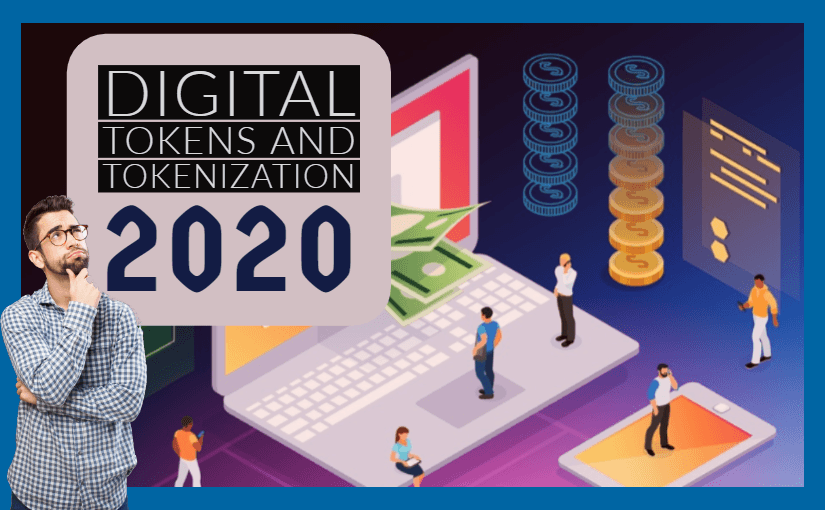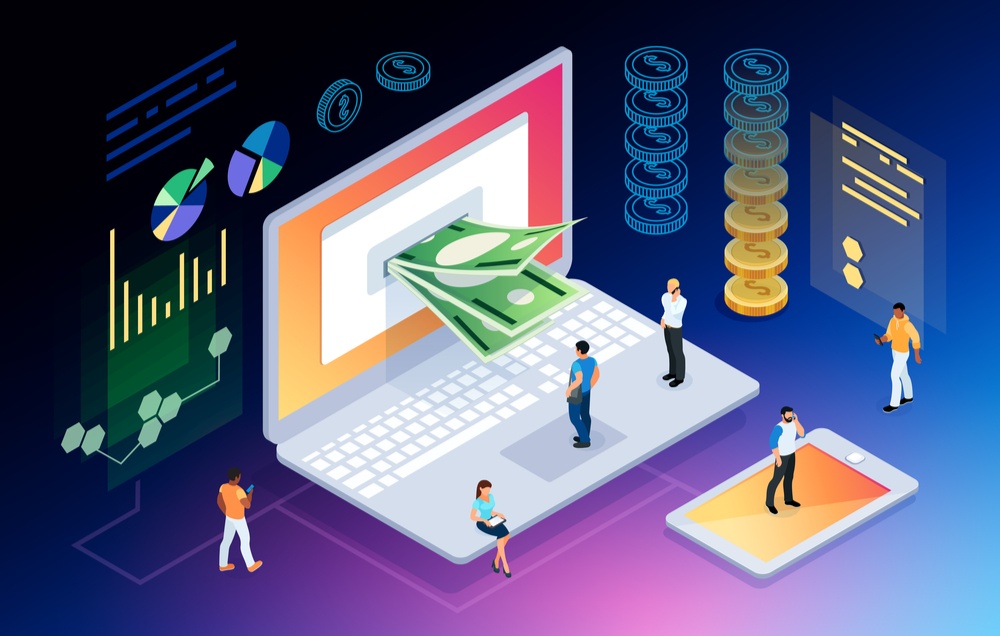2020 Offers A Clean Slate for Digital Tokens and Tokenization

Ever since the introduction of tokenization, the concept has been thrown around in different contexts. Experts believe that asset tokenization would change the business landscape in a myriad of ways. While this is a given, the concept has not hit the ground running, as expected. Instead, we have only witnessed bits and pieces of the innovative possibilities that tokenization avails. Experts blame the lukewarm run of the digital token market on the unfavorably regulatory framework that governs the investment landscape.
That said, we are at the beginning of a new decade that promises to push humanity ever closer to the heart of digitization. Therefore, it is only a matter of time before tokenization takes off and claim its place among global revolutionary tools disrupting the way we do business. It is this notion that prompted this article, as I believe that 2020 is poised to set the trend for the decade, and that tokenization is one of the narratives that would drive tech advancements in the near future. Hence, in this piece, I will explore the concept of tokenization, highlight some of its benefits, and outline factors that would determine its mainstream success.
What Is Asset Tokenization?

Tokenization is the process of denoting real-world assets with digital tokens, which would contain explicit information about the asset and its ownership. In simpler terms, tokenization is the representation of an asset, be it a piece of art or a house, with digital tokens. Once a token is linked to an asset, it will automatically transfer the ownership of the real-world asset to the token holder. Also, it is possible to divide an asset into fractions, through tokenization, and distribute the ownership accordingly.
For example, if a piece of painting costs $200,000, you can decide to tokenize it by creating tokens that represent fractions of the value of the painting. Then, you can distribute it among investors who are willing to own a share of the art piece. Since it is possible to ensure that each token comes with information about the portion of the asset it represents, it is, therefore, unlikely that tokenizing an asset would fuel disputes. More importantly, the disruptive nature of the technology that enables asset tokenization -blockchain technology – has made it viable in different industries. As such, we can tokenize any type of asset, so far we can fragmentize its value.
Why is tokenization a popular concept?
It Multiplies Investment Opportunities
From the explanation of the concept of tokenization, you will agree that digital tokens avail a microscopic approach to investment. Before the advent of tokenization, some investment classes, like real estates, were exclusive to institutional investors or rich individuals. However, with the introduction of tokenization, we can break down the valuation of an asset by offering digital tokens and distributing it to investors who can choose to buy as much as they can afford. Thus, one of the reasons why tokenization is popular is because it promotes inclusion in the investment world.
It Enables More Liquidity

Apart from availing microscopic investment vehicles, tokenization introduces liquidity to investment schemes that are normally rigid. For one, being able to fractionalize an asset, and hold digital tokens that represent a portion of the asset, makes it easier to cash in on opportunities and sell at favorable prices. This model beats the existing method of doing business that involves a lot of intermediaries, which make it a tad difficult to sell or buy assets at short notices. Tokenization allows investors to bypass intermediate processes and exchange tokens for cash or even other tokens almost instantly.
It Saves Cost
The cost of investing in some assets is so exorbitant that a majority of investors shy away from such investment classes. However, with tokenization, you can circumvent costly processes. This assertion holds because tokenization enables smart contracts that automate the whole process of ownership transfer. Once you set the conditions of a transaction, and both parties accept them, the smart contract ensures that the terms are fulfilled before completing the transaction. Hence, there is no need for intermediaries who charge fees for facilitating and tracking the transfer of ownership.
Tokenization Promotes Transparency and Security
Blockchain technology allows us to record and track the history of all tokens. Before acquiring an asset, you can access the records logged on the token and view past owners and other vital information that connotes the viability of the asset. The records of a blockchain are tamper-free, which ensures that the system is transparent. As a result of the distributive nature of the technology, it is almost impossible for nefarious entities to gain access to the blockchain and alter its contents.
Also, blockchain, blockchain technology utilizes cryptography to secure tokens and the data entered into the distributed ledger.
The Applications of Tokenization
There are different use cases of tokenization, and we have begun to see real-world applications in various sectors. This is where security tokens enter the fray. It is one of the most secure and legal ways of fractionalizing and distributing the ownership of legal entities. As of 2018, the investment space was buzzing about the prospect of security tokens, and 2019 was poised to go down as the year when they would finally find mainstream adoption.
However, it has not gone according to plan. Security tokens are yet to make the sort of impact that would have pushed tokenization to the mainstream. One of the reasons for this is the regulatory rollercoaster that had since trailed the emergence of digital assets. Remember that the technology is still nascent, and regulators are still trying to figure out the framework that would encapsulate its diverse functionalities.
There are many examples of instances where proposed Security Token Offerings failed to manifest. This assertion is especially true in the real estate industry, where the proliferation of tokenized assets could disrupt the overly centralized sector. For one, a report surfaced in late November that a project, introduced in 2018, looking to tokenize a 1700 square foot luxury real estate in New York, had quietly discontinued. The major reason for this, as stated by the co-founder of one of the companies involved in the project, was that the real estate market was not mature enough for such an innovative leap. Also, he mentioned that institutional investors were not particularly thrilled about it.
Also, in September, a report revealing the cancellation of the tokenization of a “$20 million of private equity in a luxury student residence” surfaced. In this deal, the facilitators proposed to divide the equity into 955 tokenized shares, with a $21,000 price tag for each. When the deal fell through, Josh Stein, the CEO of the company anchoring the project, stated that a dispute with lenders had prompted the cancellation of the project.

Josh Stein, CEO and CoFounder of Harbor
According to his representative:
“The issuer was unable to come to favorable terms with the existing mortgage lender. As a result, they decided not to move forward with the offering.”
The aforementioned cases show that there are lots of factors that could stifle the success of security tokens in the real estate industry. However, there are reasons to believe that it is only a matter of time before we get to see the influx of tokenized assets in the space. For one, in March 2019, a report revealed the successful tokenization of a $2million worth of property in Germany. The project later got approval from Germany’s financial regulatory authority to trade as a public security token offering.
Another successful attempt was recorded in May when Blockimmo tokenized a real estate asset worth $2.98 million in Switzerland.
Away from the real estate scene, we have seen the concept of tokenization makes its way into the sports world, as news that a professional basketballer was on the verge of tokenizing his contract stole the headlines. Spencer Dinwiddie, an NBA basketballer, had tried to tokenize a fraction of his three-year contract worth $34 million and offered qualified investors an opportunity of making earnings every month.
In response to this unprecedented investment scheme, the NBA moved to reject Dinwiddie’s proposal by citing Article II of the CBA. This act forbids players from transferring the right of earning compensation from employment contracts to a third party. According to the NBA, Dinwiddie’s proposed investment token allowed him to transfer his paycheck to token holders, which the association sees as third parties. In its true sense, the NBA’s response was no surprise, since history shows that such radical ideas almost always face rejection at the first time of asking.
Regardless of the outcome of this episode, Dinwiddie has shown possibilities that no one had envisaged. Now, professional athletes are aware that they can get more, in terms of finances, in their short career. And I believe that the idea of players tokenizing their contracts will catch on eventually.

In December 2019, Nike, one of the biggest shoe manufacturers, secured a patent for a new project that looks to tokenize exclusive shoes. According to the information contained in the patent, Nike would tokenize its shoes on the Ethereum blockchain and transfer ownership to buyers. More impressively, token holders would have control over their shoes, and they can choose to capitalize on their autonomy to trade shoes or breed new custom shoes. Since all these would take place on the blockchain, the tokens come with cryptography, which further assures buyers that their digital shoes are safe. The patent reads:
“Using the digital asset, the buyer is enabled to securely trade or sell the tangible pair of shoes, trade or sell the digital shoe, store the digital shoe in a cryptocurrency wallet or other digital blockchain locker, intermingle or “breed” the digital shoe with another digital shoe to create “shoe offspring,” and, based on rules of acceptable shoe manufacturability, have the newly bred shoe offspring custom made as a new, tangible pair of shoes.”
It is safe to say that Nike’s foray into asset tokenization is a well thought out move to eliminate counterfeiting, an issue plaguing popular and high-end shoe manufacturers. Moreover, creating digital shoes is a great way of getting customers more involved in product design and creation – a plus to the Nike brand.
Tokenization in 2020
I envisage that, as a result of several factors, tokenization will continue its uptrend in the year 2020. In this year, I expect the following:
A Better Grasp of The Concept and The Technology Backing It
There is reason to believe that tokenization will have a favorable year, as developers, companies, and legal practitioners work hand-in-hand to get a better understanding of the concept. In most cases, where the tokenization of an asset has failed, it is common to find that one of the core contributors of the project lacks the know-how to create a system robust enough to efficiently represent a real-world asset and, at the same time, fulfill regulatory obligations.
Regulatory Clarification
Like I said earlier in this article, a majority of regulators are yet to create regulatory guidelines for the creation and distribution of digital tokens. Through 2019, the United States’ SEC went after startups perceived to have issued security tokens without complying with due process. While this was one of the core narratives of 2019, I expect token issuers and regulators to find common ground, even as the latter continues to work on the unification and clarification of crypto regulations.
The Influx of Innovative Use Cases of Tokenization

In 2019, we saw how tokenization could have exposed the sports professionals to one more way of capitalizing on their market valuation. Also, Nike’s patent showed that it is possible to infuse interesting features in a blockchain network facilitating digital tokens that represent real-world assets. In the same way, I expect that startups, individuals, and enterprises will introduce new variations of digital tokens and investment models based on tokenization.
Final Thoughts
Tokenization has not taken off in some industries, but the successes recorded in 2019 tell a tale that suggests that 2020 might offer a new narrative. Needless to say, its success would have a direct impact on the current push for digitization.
